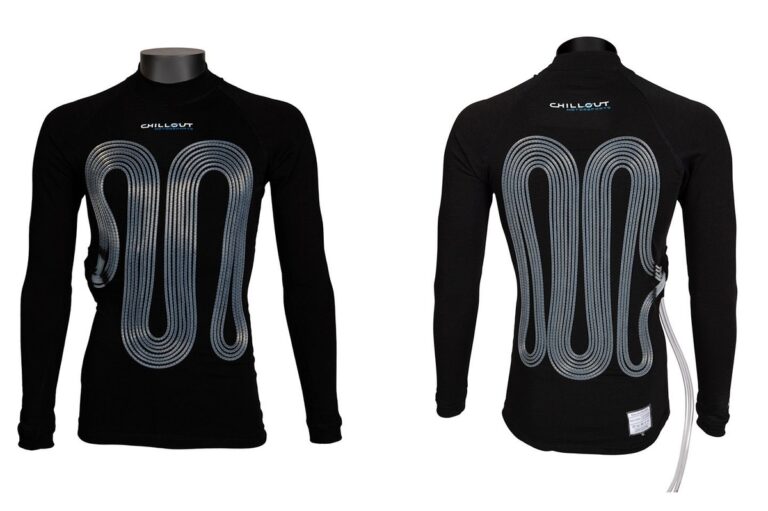The brand new wearable-tech shirts designed to maintain drivers cool in races in excessive warmth shall be elective for rivals within the 2025 Method 1 season, Autosport understands.
The units are being launched as a part of the FIA’s response to the occasions of the 2023 Qatar Grand Prix, the place Logan Sargeant withdrew for Williams with heatstroke, then Alpine driver Esteban Ocon vomited in his helmet and Aston Martin racer Lance Stroll briefly handed out.
As first reported by Autosport, the preliminary pondering on the subject was to aim to introduce an ersatz air-conditioning unit to chill automotive cockpits.
However this was deserted attributable to complexities arising in adapting such package, and so utilising present wearable-tech – such because the Cypher Pro Micro Cooler produced by Chillout Motorsports (pictured above) – was deemed to be the FIA’s most well-liked route.
One of many principal challenges to this work was guaranteeing the cooling units complied with the governing physique’s stringent guidelines on fireplace resistance for all driver-worn package within the occasion of a crash.
The units mix a shirt with practically 50 metres of tubes that pump cooled fluid saved in a devoted field that homes a micro-processor and the expertise wanted to maintain the related temperatures down round a driver’s torso.
Driver Cooling system – Chillout Motorsport
Photograph by: Chillout Motorsport
In an announcement, the FIA has stated the “finalisation of the driving force cooling system following work carried out between the FIA and the Method 1 groups, supported by adjustments to outline when such methods should be used” and so was authorized by the F1 Fee in London earlier this week.
Autosport understands that this contains defining when the system will have to be used – as its use will solely be mandated within the guidelines for the groups to suit it to their vehicles when temperatures attain a sure threshold.
This has now been set at 31C ambient temperature on the FIA sensors positioned round a typical F1 venue (there are 4 climate stations erected at every race), slightly than being measured on how scorching circumstances are in automotive cockpits, which might rapidly attain 50-60C.
For the 2026 F1 season, the cooling methods will powered by the in another way organized electrical methods of the brand new automotive designs and can subsequently be carried always.
However for the upcoming marketing campaign, because the system solely shall be retro-fitted to vehicles when the 31C mark is reached, Autosport understands that drivers have been given the choice of not utilizing it.
The added time earlier than it turns into necessary will even permit additional proof of idea research to be accomplished and for the methods to probably be additional tweaked forward of 2026.

Logan Sargeant, Williams Racing
Photograph by: Williams F1
But when a driver chooses to not put on a cooling vest in 2025, it’s understood they need to nonetheless carry an additional 500g in ballast inside their cockpits to make sure they don’t achieve a aggressive edge by selecting to take this method.
On the Hungarian GP final 12 months, when this subject first surfaced within the wake of the FIA’s dedication to make sure the Qatar farce wouldn’t be repeated, Lewis Hamilton declared “it isn’t wanted”.
“That is Method 1,” he added. “It is at all times been like this. It is powerful in these circumstances. We’re highly-paid athletes. And you have to practice your arse off to be sure to can stand up to the warmth, in the end.
“It is powerful. It is not simple, particularly while you go to locations like Qatar and Singapore. However I do not assume we want an AC unit within the automotive.”
On this article
Alex Kalinauckas
Method 1
Be the primary to know and subscribe for real-time information electronic mail updates on these subjects
Subscribe to news alerts
